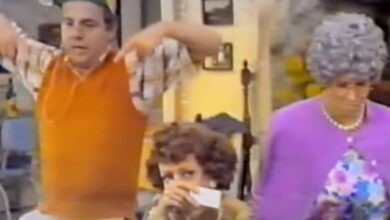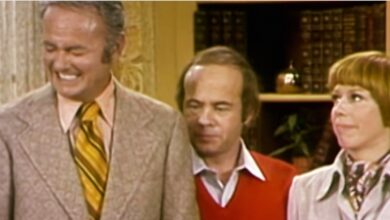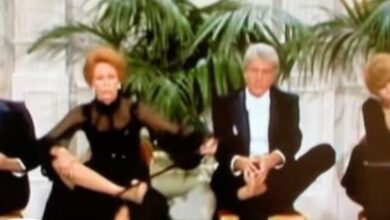Tom Jones’ ‘It’s Not Unusual’ Launches a Welsh Powerhouse and Rewrites Pop Swagger in 1965
Released in early 1965, It’s Not Unusual burst onto the pop scene with a confident strut that felt both fresh and inevitable. Clocking in at just over two minutes, the track wasted no time announcing the arrival of a new kind of pop star—one with brassy charm, a booming voice, and unmistakable charisma. The song raced up the UK Singles Chart, hitting number one in March and eventually cracking the Top 10 in the United States. Its irresistible rhythm, swinging horns, and bold vocal delivery made it one of the defining hits of the British pop invasion, and it marked the dazzling debut of a performer who would soon become a global sensation.
Tom Jones, born Thomas John Woodward in Pontypridd, Wales, had been performing in clubs under the name Tommy Scott before a twist of fate and a change of name sent him rocketing to fame. Known for his commanding baritone, rugged good looks, and unmistakable confidence, Jones possessed a vocal range and stage presence that made him stand out in a crowded British music scene. Unlike many of his contemporaries, he didn’t lean on a guitar or a beat group—his power came from his voice, his swagger, and his ability to sell a lyric with theatrical flair.
The inspiration behind It’s Not Unusual came from songwriting duo Les Reed and Gordon Mills, the latter of whom would go on to manage Jones’s career. The song was originally intended for another artist, Sandie Shaw, but when she heard the demo recorded by Jones, she insisted he keep it. It was a rare moment in pop history where fate and instinct collided. Jones’s reading of the song wasn’t just vocally impressive—it was electric. His delivery turned a story of romantic frustration into a strutting anthem of cool defiance.
The recording session itself captured lightning in a bottle. Produced by Peter Sullivan and backed by a cadre of seasoned studio musicians, including future Led Zeppelin guitarist Jimmy Page, the track came together at Decca Studios with a brisk, almost live energy. The signature horn riff—a brassy fanfare that instantly grabs the ear—was coupled with Jones’s vocal, which moved effortlessly from smooth croon to near-shouted power. It was a perfect balance of polish and spontaneity, a sound engineered to stand out on radio and television.
Upon its release, the single was an immediate hit in the UK. By March 1965, it had climbed to number one on the UK Singles Chart, holding its place as a favorite among radio DJs and teenage fans alike. In the U.S., it reached number 10 on the Billboard Hot 100, no small feat for a newcomer from Wales. The song’s success was bolstered by appearances on major television programs, including The Ed Sullivan Show and Top of the Pops, which helped establish Jones as a household name on both sides of the Atlantic.
Culturally, It’s Not Unusual arrived at a turning point in pop music. The Beatles had opened the door for British acts, but Jones offered something different—an unapologetically masculine, soulful presence that wasn’t tied to a band. His mix of operatic power and pop accessibility gave him an edge in a market yearning for variety. The song’s swinging tempo and mod sensibility also aligned perfectly with the stylish mid-’60s aesthetic, giving it legs well beyond the record stores.
For Jones, the song was the key that unlocked a world of opportunity. It set the tone for a career that would span decades, genres, and continents. Following the success of It’s Not Unusual, he embarked on international tours, secured residencies in Las Vegas, and became a mainstay on both American and British television. The hit was more than a debut single—it was a passport to global stardom, and Jones seized the moment with trademark energy.
The song also left an imprint on other performers and the broader pop landscape. Its blend of brassy orchestration, upbeat rhythm, and cheeky lyrics would influence later acts looking to combine vocal prowess with theatrical flair. Artists like Engelbert Humperdinck and even Elvis Presley—who admired Jones and would later befriend him—acknowledged the shift in vocal performance standards that Jones helped usher in.
Over the years, It’s Not Unusual has been covered, parodied, and paid homage to by countless performers. From jazz stylists to sitcom characters (most notably Carlton Banks of The Fresh Prince of Bel-Air), the song has lived many lives, each time reaffirming its status as a pop culture staple. Few songs have remained so instantly recognizable and widely beloved across such a broad span of audiences.
In the year of its release, Jones was also navigating his own meteoric rise. The success of It’s Not Unusual meant sudden fame and a grueling schedule. But rather than being daunted, he embraced it. His performances became more polished, his fashion more flamboyant, and his appeal more universal. Despite the whirlwind, he stayed rooted in the sound that had brought him success—big, emotional, and thrillingly direct.
Decades later, It’s Not Unusual continues to receive airplay and remains the quintessential Tom Jones song. Whether on classic hits radio, at karaoke bars, or in commercials and film soundtracks, its brassy hook and unforgettable chorus still energize listeners. The song’s placement on greatest hits lists and in pop history anthologies is well-earned—it encapsulates an entire era in under three minutes.
Musically, the track opened new doors for blending pop with soul and showmanship. It proved that British artists could dominate the charts without mimicking American rock or Motown. Jones’s powerful vocal set a new standard for male singers, and the song’s arrangement demonstrated how orchestration and rhythm could drive pop success.
In the years since its release, Jones has continued to evolve—recording blues, gospel, and alternative rock—but It’s Not Unusual remains his signature. In 2003, the track was inducted into the Grammy Hall of Fame, and Jones himself was knighted in 2006 for services to music. It is a legacy built, in large part, on the strength of one unforgettable introduction.
Ultimately, what makes It’s Not Unusual endure isn’t just the brass or the bravado—it’s the spirit of the performance. It captured a young man at the start of a legendary career, singing with joy, passion, and a wink. In doing so, it became more than a hit song. It became a pop anthem for the ages.





